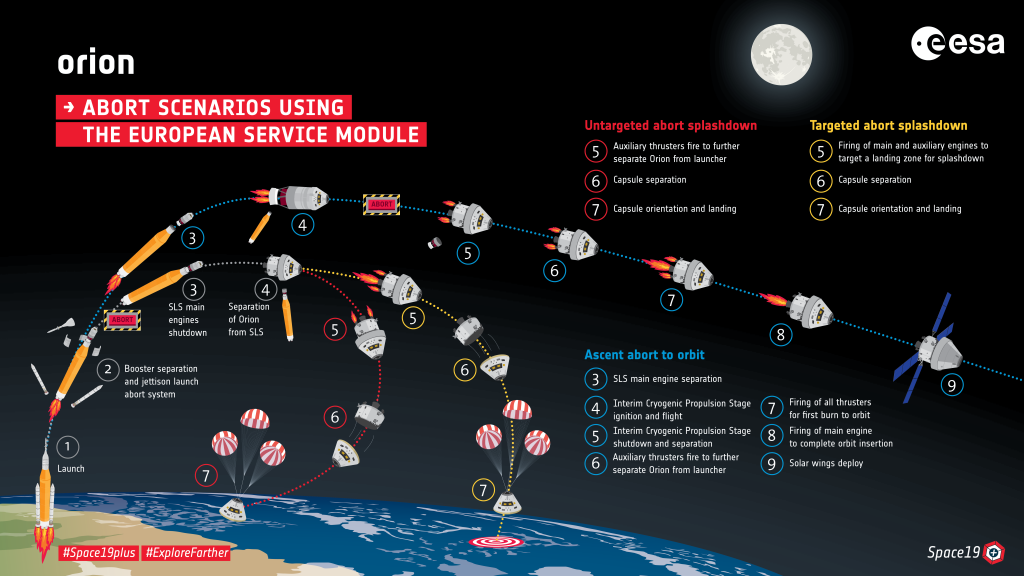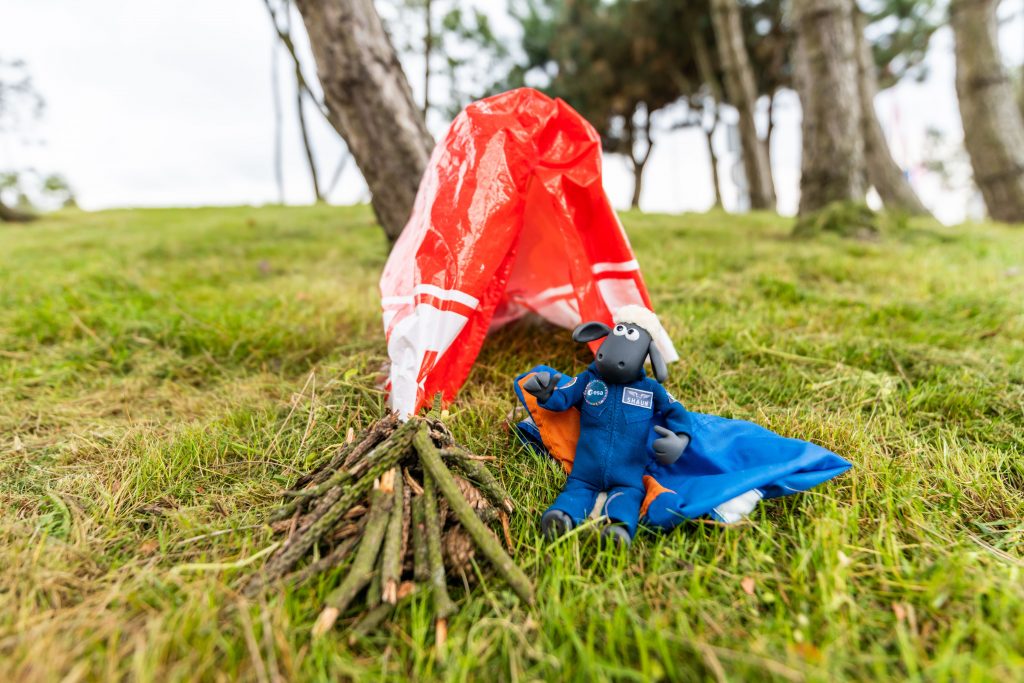Astronauts have to be prepared for almost everything in space, but also anything on the ground too, for example, an emergency landing in a faraway place.
Spacecraft leaving the International Space Station, or returning from the Moon, may be forced to come down in seas, deserts, tropical rainforests or on glaciers, in summer or winter.
Generally, a spacecraft lands within a few kilometres of its planned landing site, but Shaun the Sheep had to train for a return in a so-called ‘baaaa-llistic mode’, meaning the spacecraft has a steeper reentry trajectory, putting the astronauts under increased gravity loads. This also means it lands with less precision – sometimes hundreds of kilometres away from their intended landing area.
It could be some time before the crew is rescued by recovery forces, so astronauts need to be able to survive on their own, relying on the emergency pack from their spacecraft and using very basic items from their natural surroundings.

At home on Mossy Bottom Farm, Shaun has extensive experience of the countryside and surviving off the land. But even a seasoned outdoors expert might need some tips if they find themselves in freezing cold conditions in a remote Arctic wasteland or, even worse, at sea.
Surviving a close shave…
All of ESA’s astronaut recruits go through a basic survival training programme, then move on to specific training depending on the space missions they are assigned to. “We want to give them the basic knowledge of survival in the wilderness,” says Loredana Bessone, responsible for survival training at the European Astronaut Centre in Cologne, Germany.
“After learning general survival skills applicable in all weather conditions and in environments that most sheep are already familiar with, they will learn vehicle and environment-specific survival skills later during their mission training.”

Astronauts are also introduced to the skills of climbing, descending high cliffs safely, crossing rivers and navigating in the wilderness using only nature and the stars to guide them, something very close to home for Shaun the Sheep!
Astronauts say the training is far from being a holiday camp: climbing mountains while being cold and wet requires nerves of steel and eating grass and worms is not something your average city dweller will be used to!
“We were quite hungry after the first 48 hours. Sleeping in those conditions is not easy either. Overall, it was hard. But looking back now, it was a great experience,” said British ESA astronaut Tim Peake.
All astronauts have to undergo winter survival training. Shaun was the first astronaut of his kind to undergo ESA winter survival training. At ESTEC in the Netherlands, he was shown how to set up camp, build a shelter, make a fire, find food and cook with primitive tools in the wild forests of the Noordwijk coast.

SpaceX Dragon and Artemis astronauts also need sea survival training and they are introduced to the water at the Neutral Buoyancy Laboratory at NASA’s Johnson Space Center, Houston. Here they learn how to exit their spacecraft, survive in cold water and right capsized life rafts.

 Automated Transfer Vehicle page
Automated Transfer Vehicle page ATV blog archive
ATV blog archive
 NASA Orion page
NASA Orion page NASA Artemis
NASA Artemis Airbus Orion page
Airbus Orion page
Discussion: 2 comments
Love this stuff!!! Hope I never miss anything.
But, hay! Shaun eats grass and has a natural woolly fleece so surely he’s already well equipped to survive ? On second thoughts, I’m not so sure about an ocean landing. 🙂 Go, Shaun!!